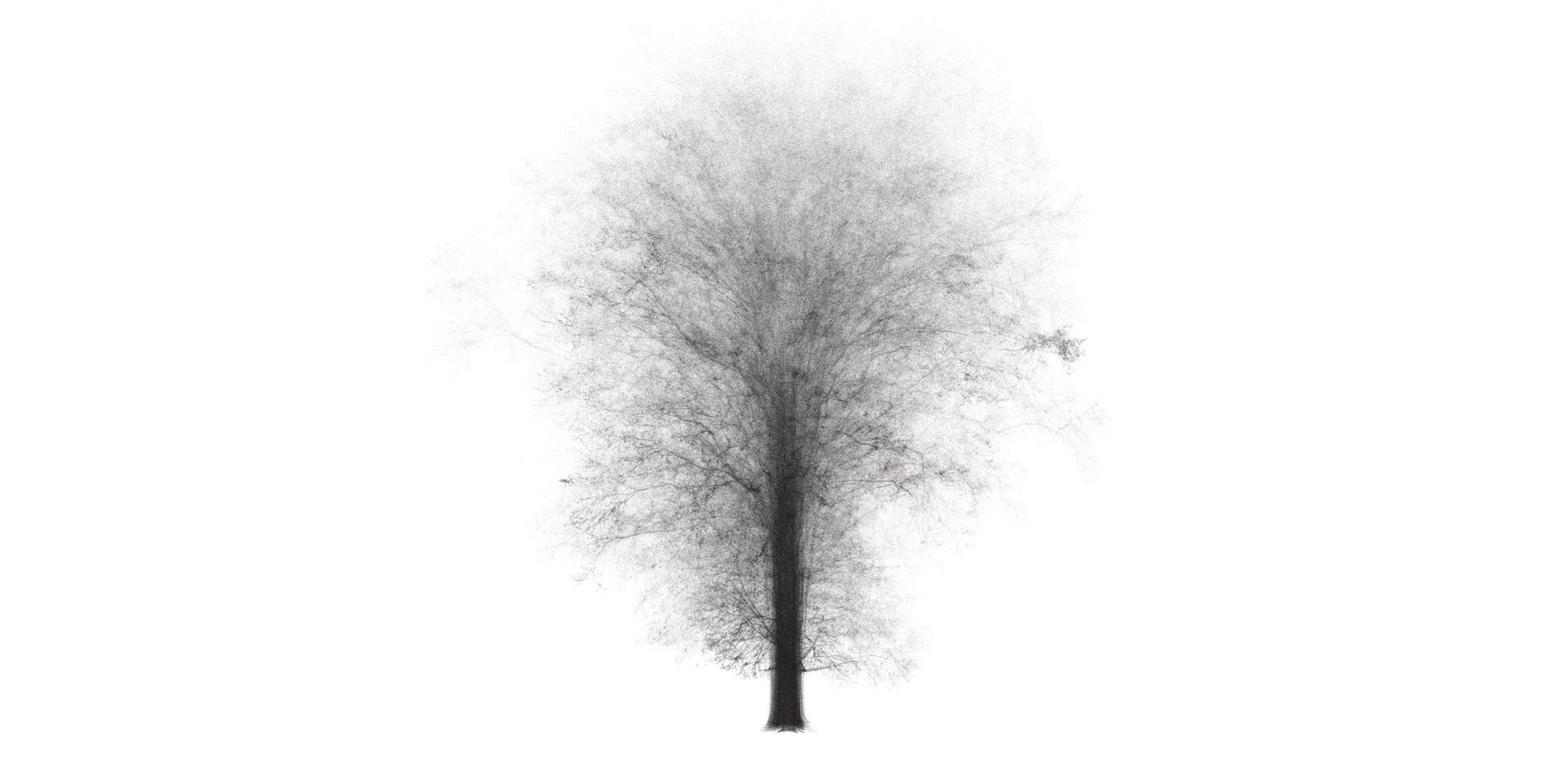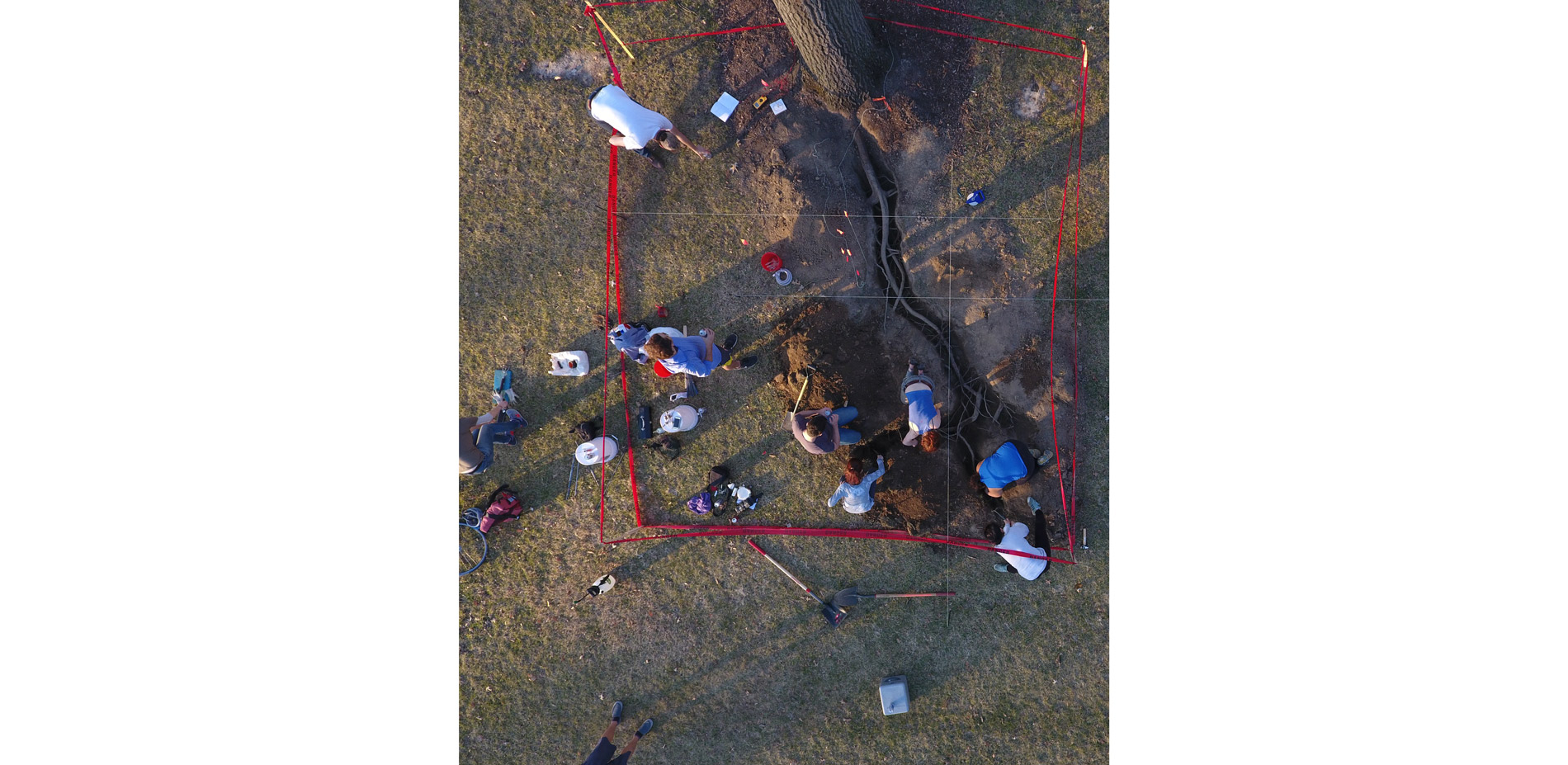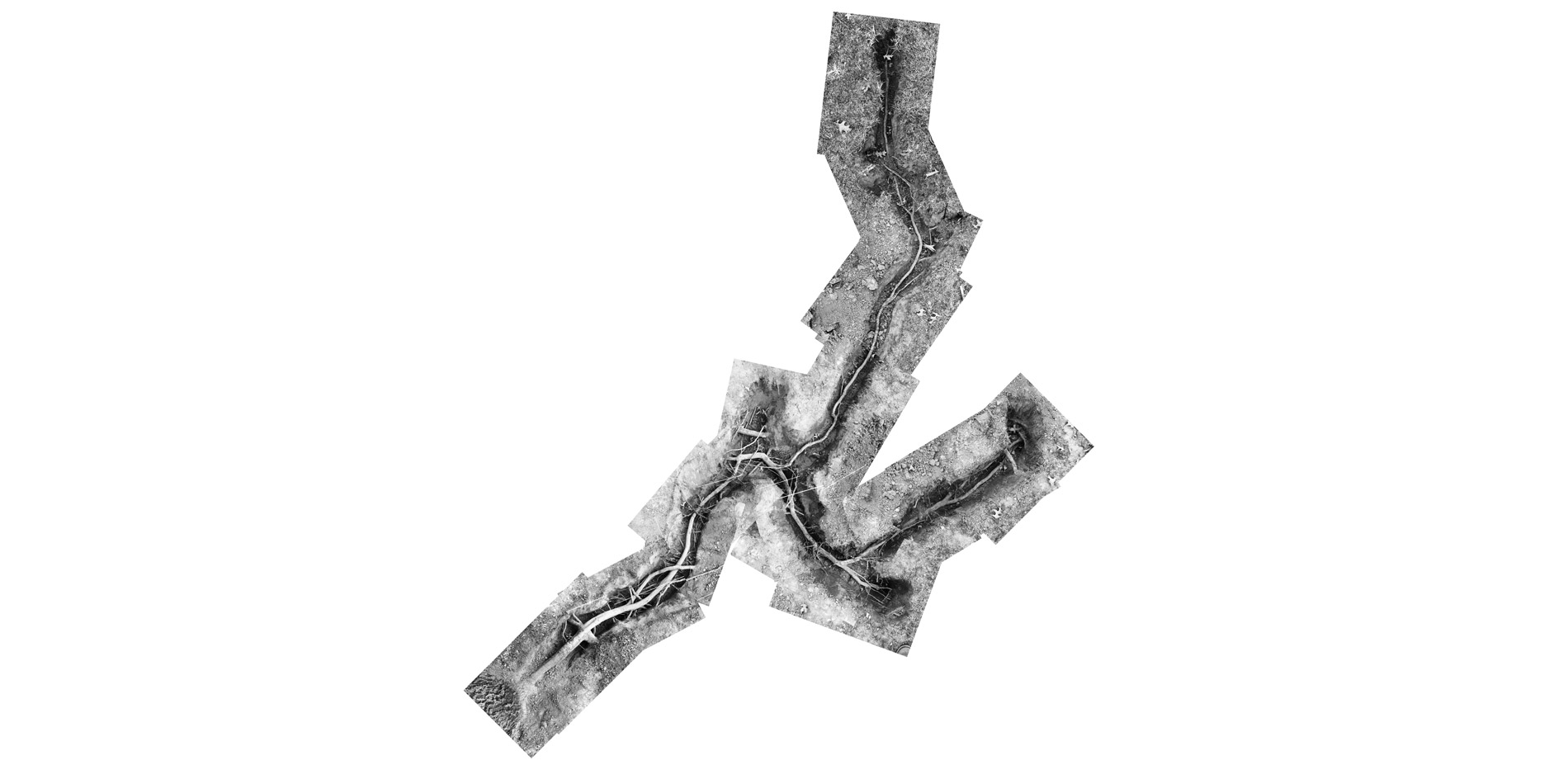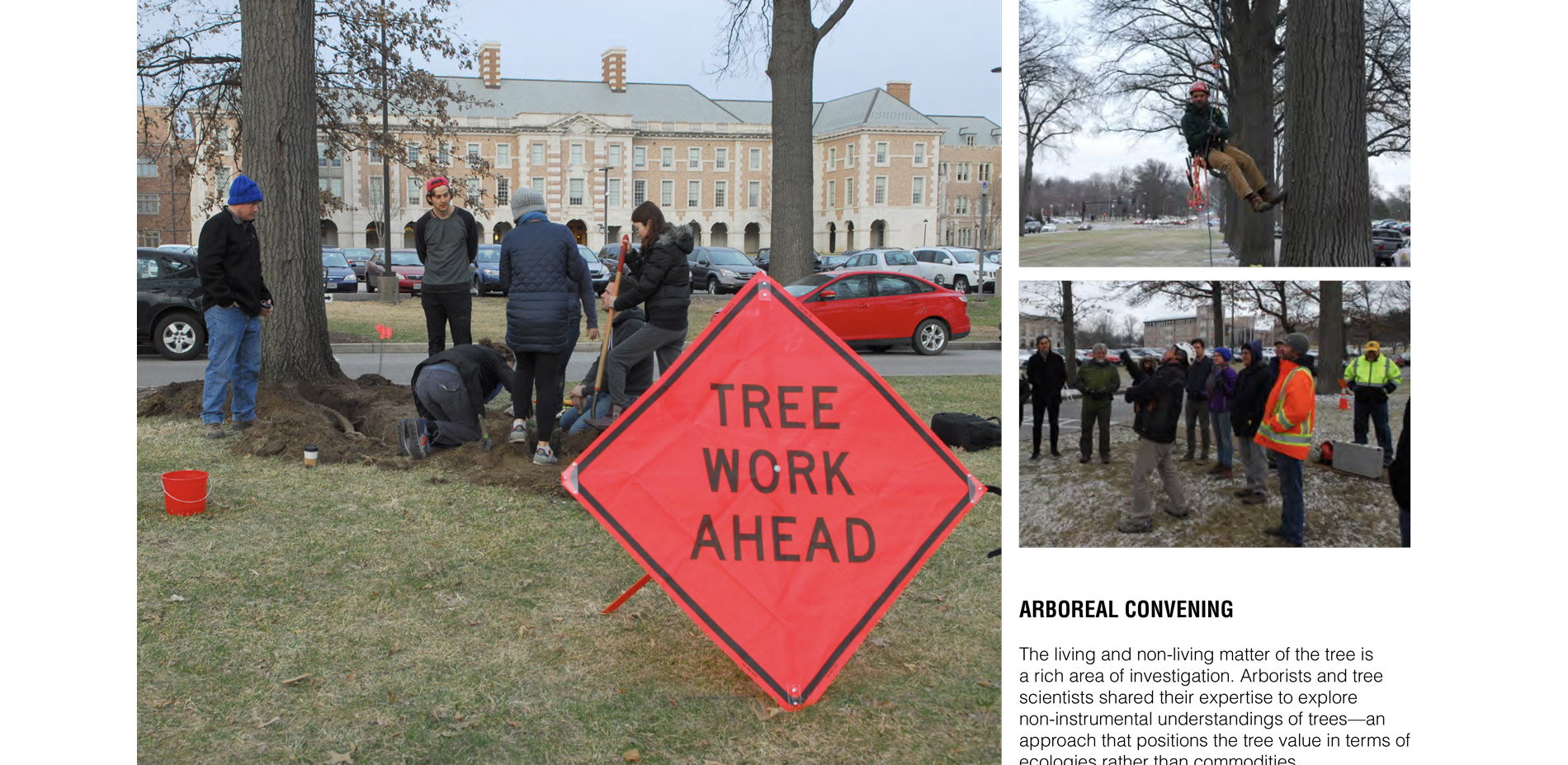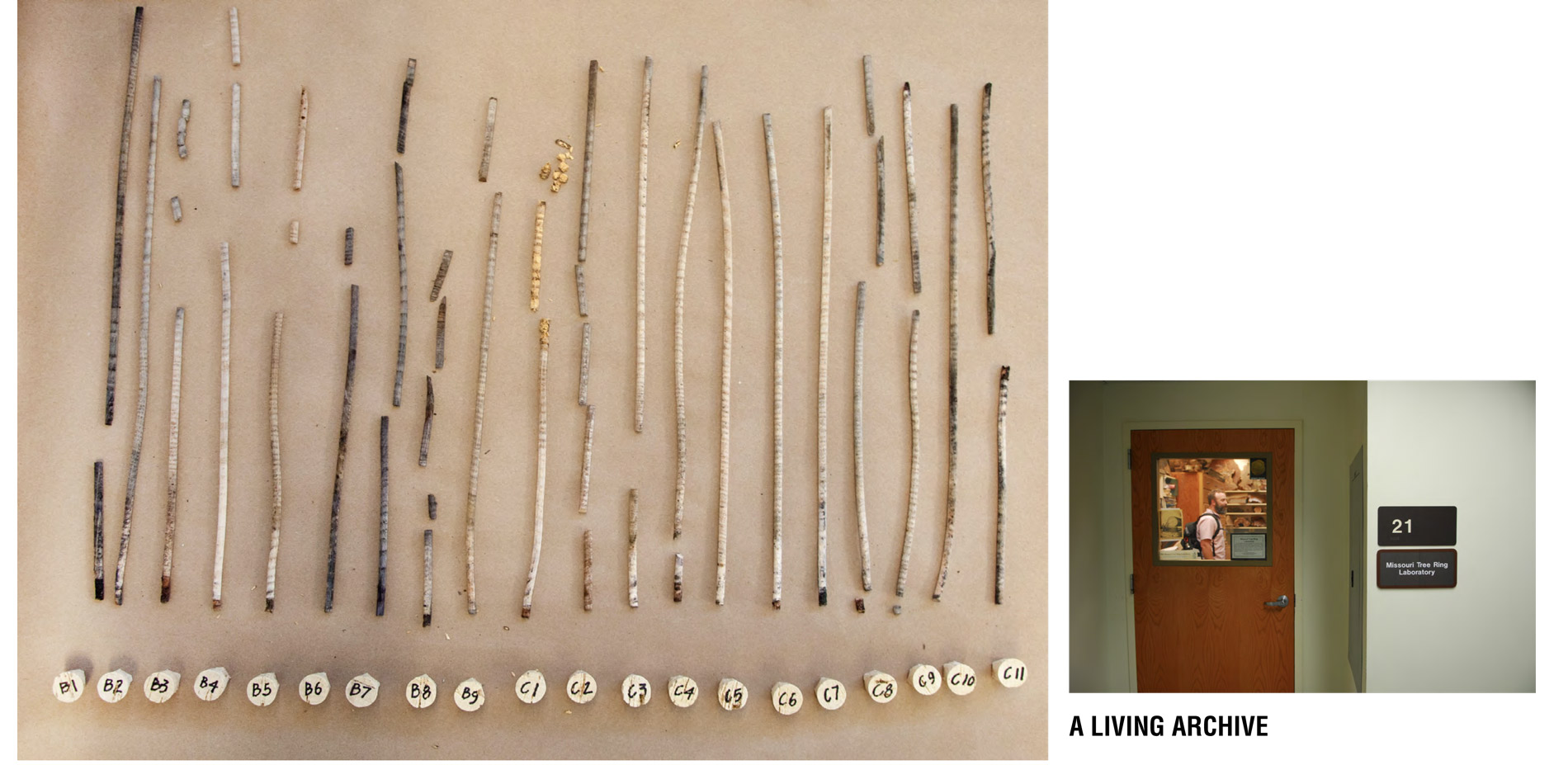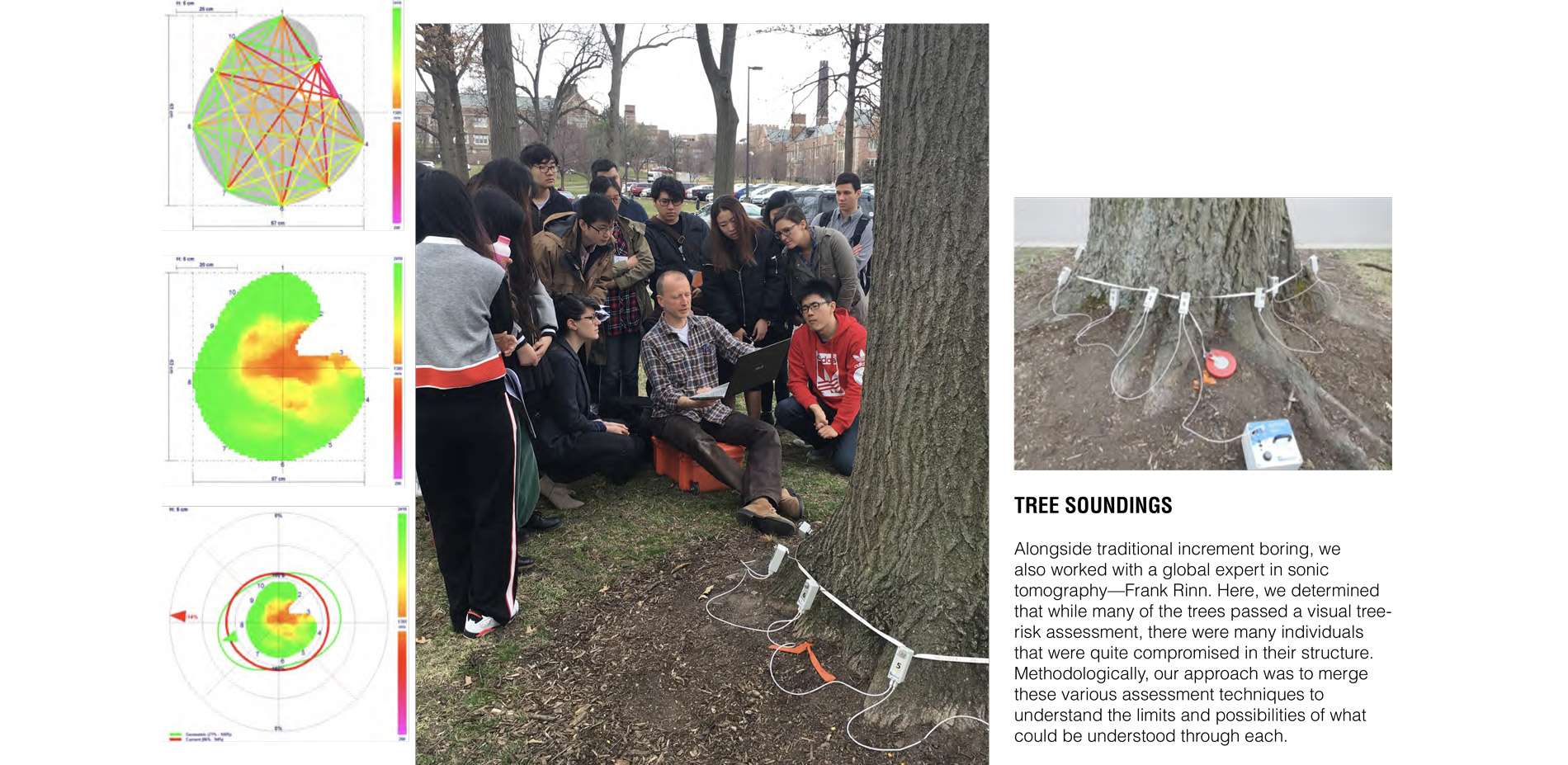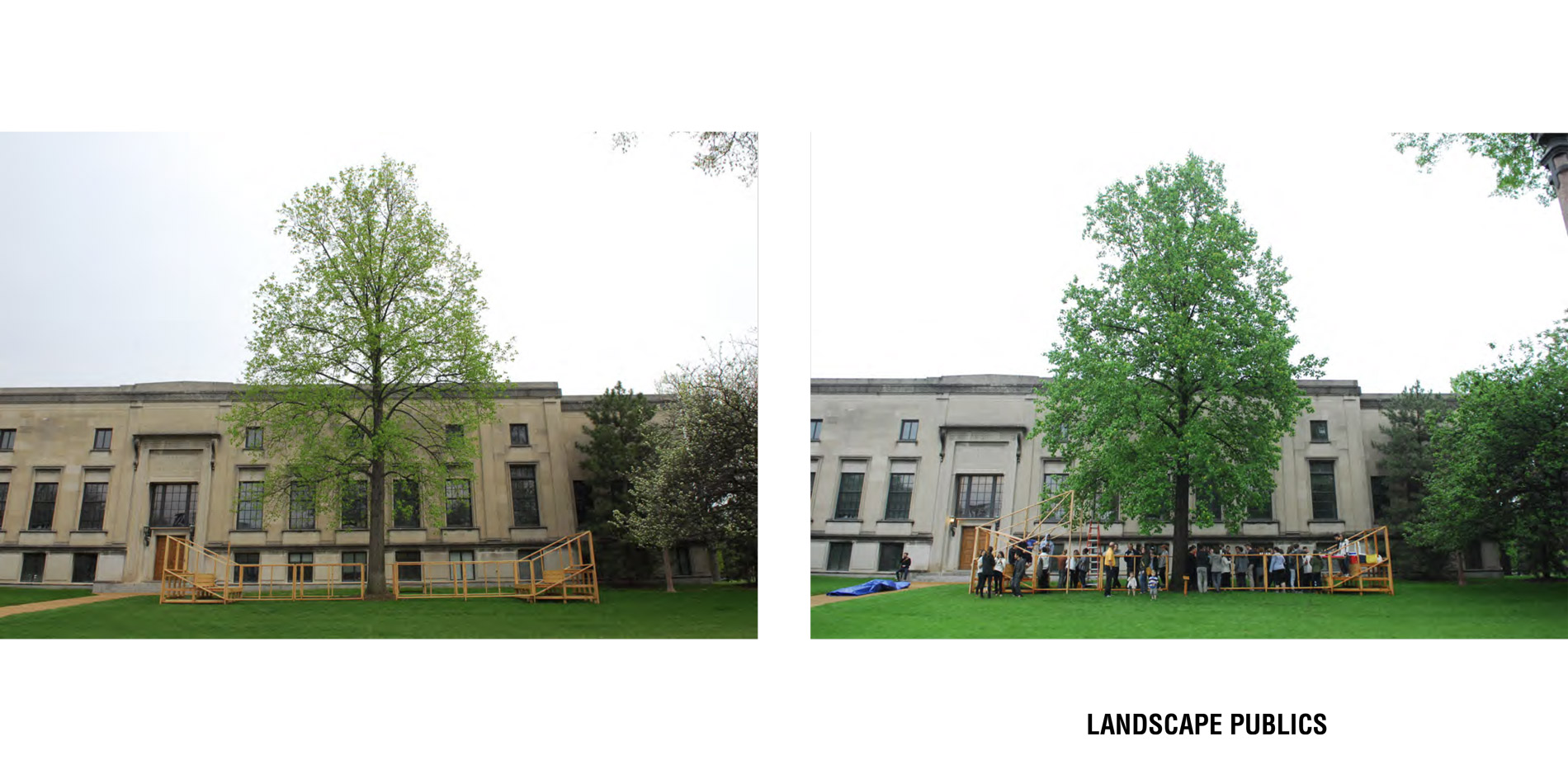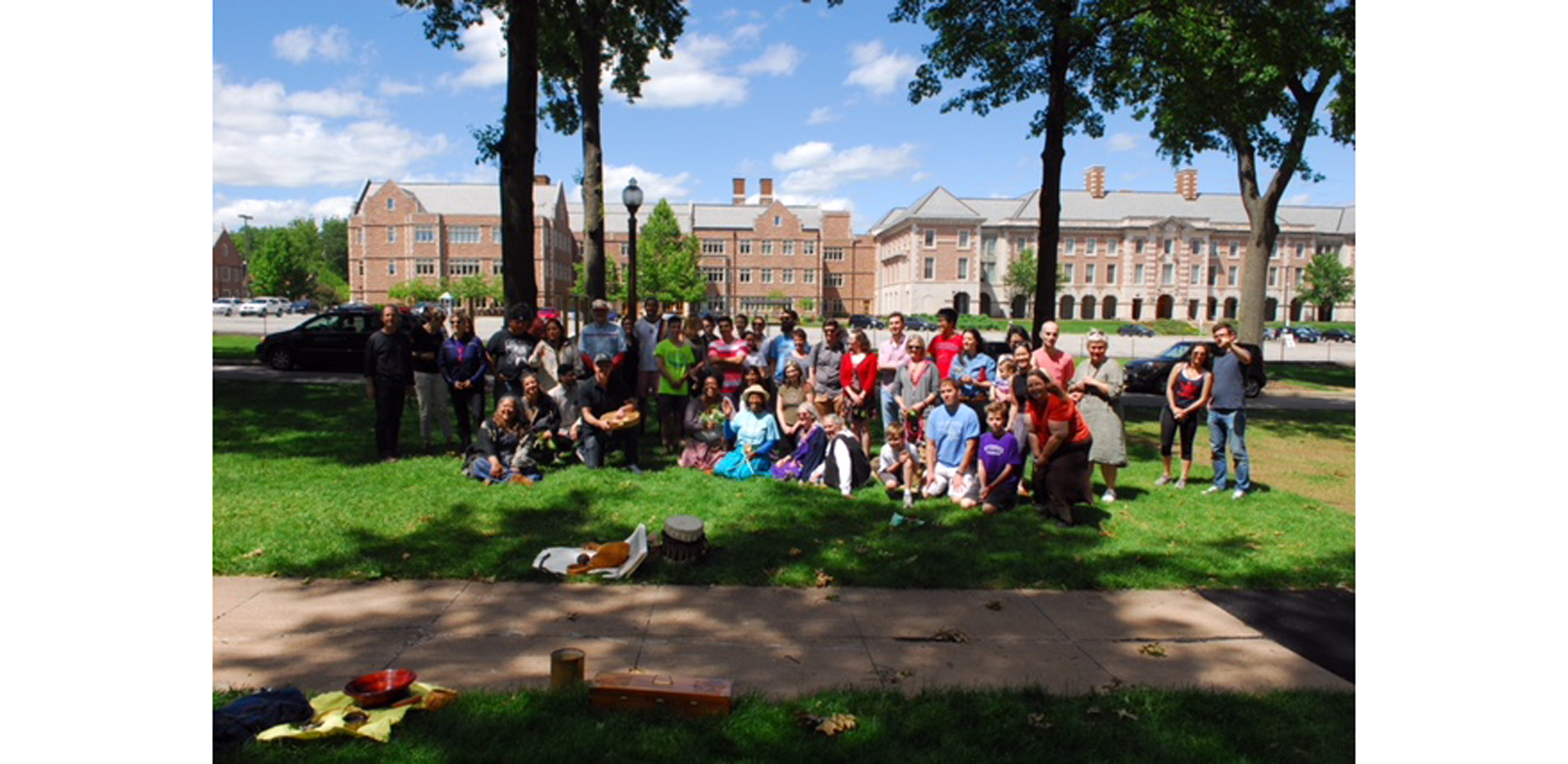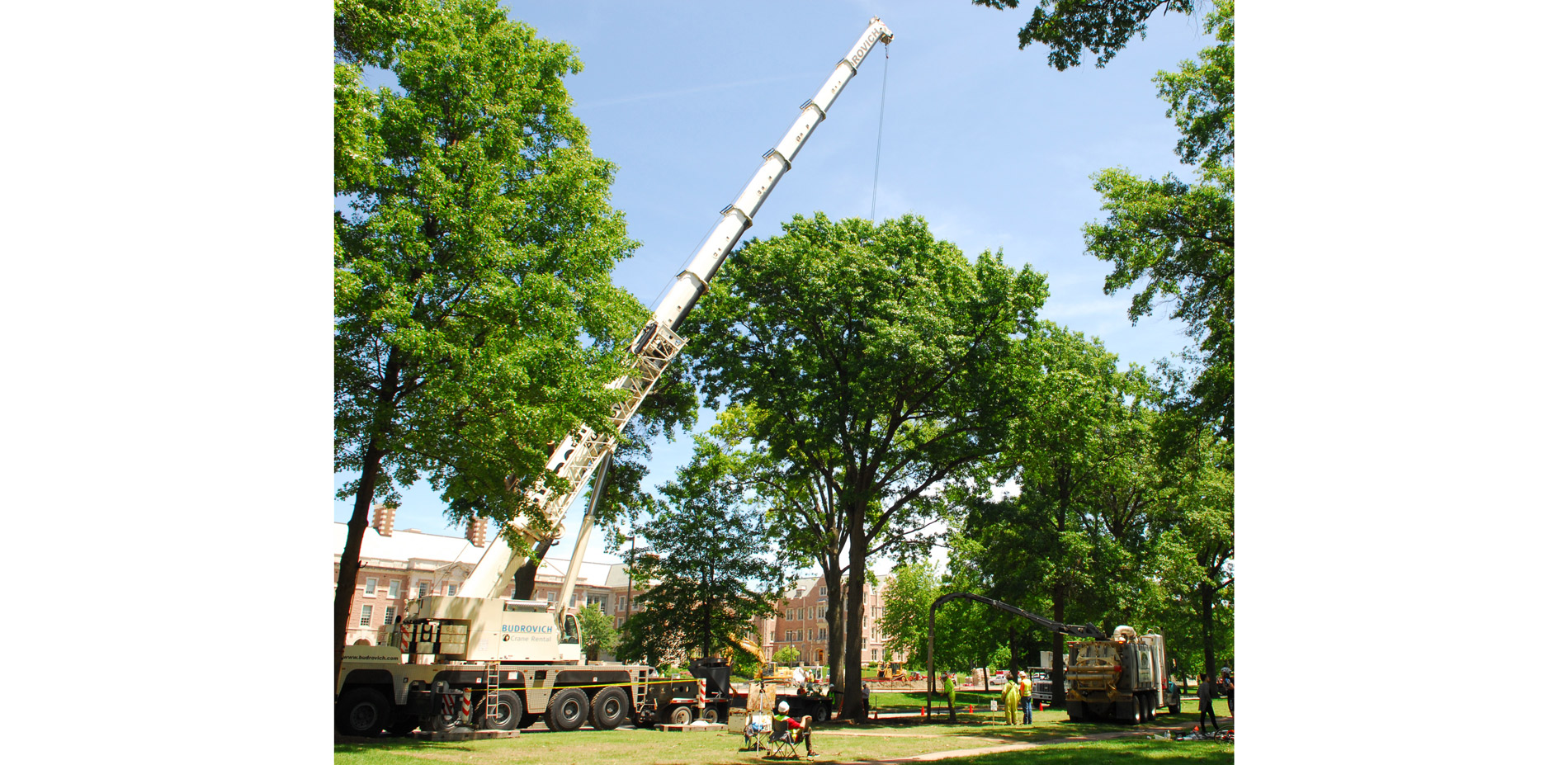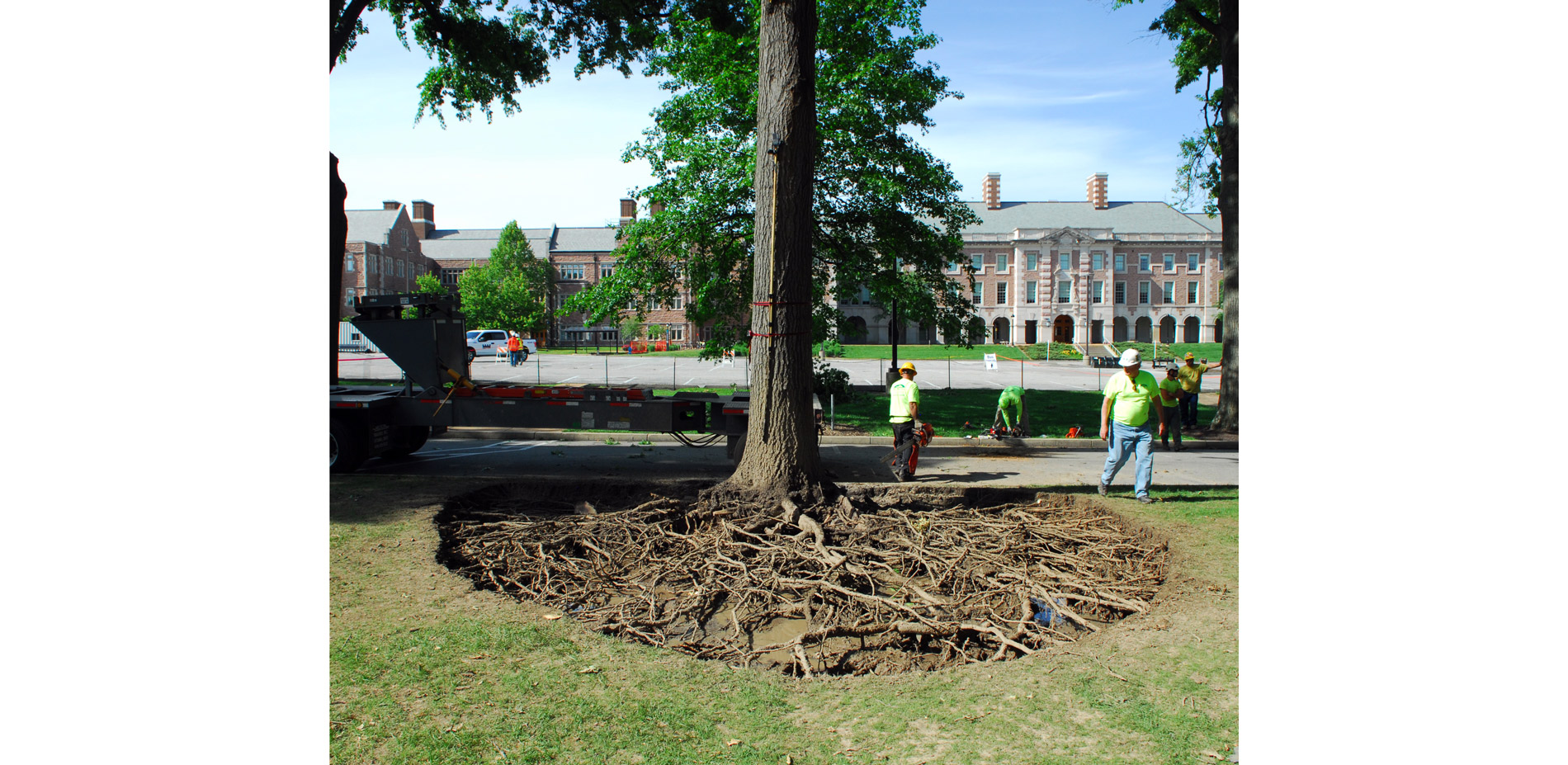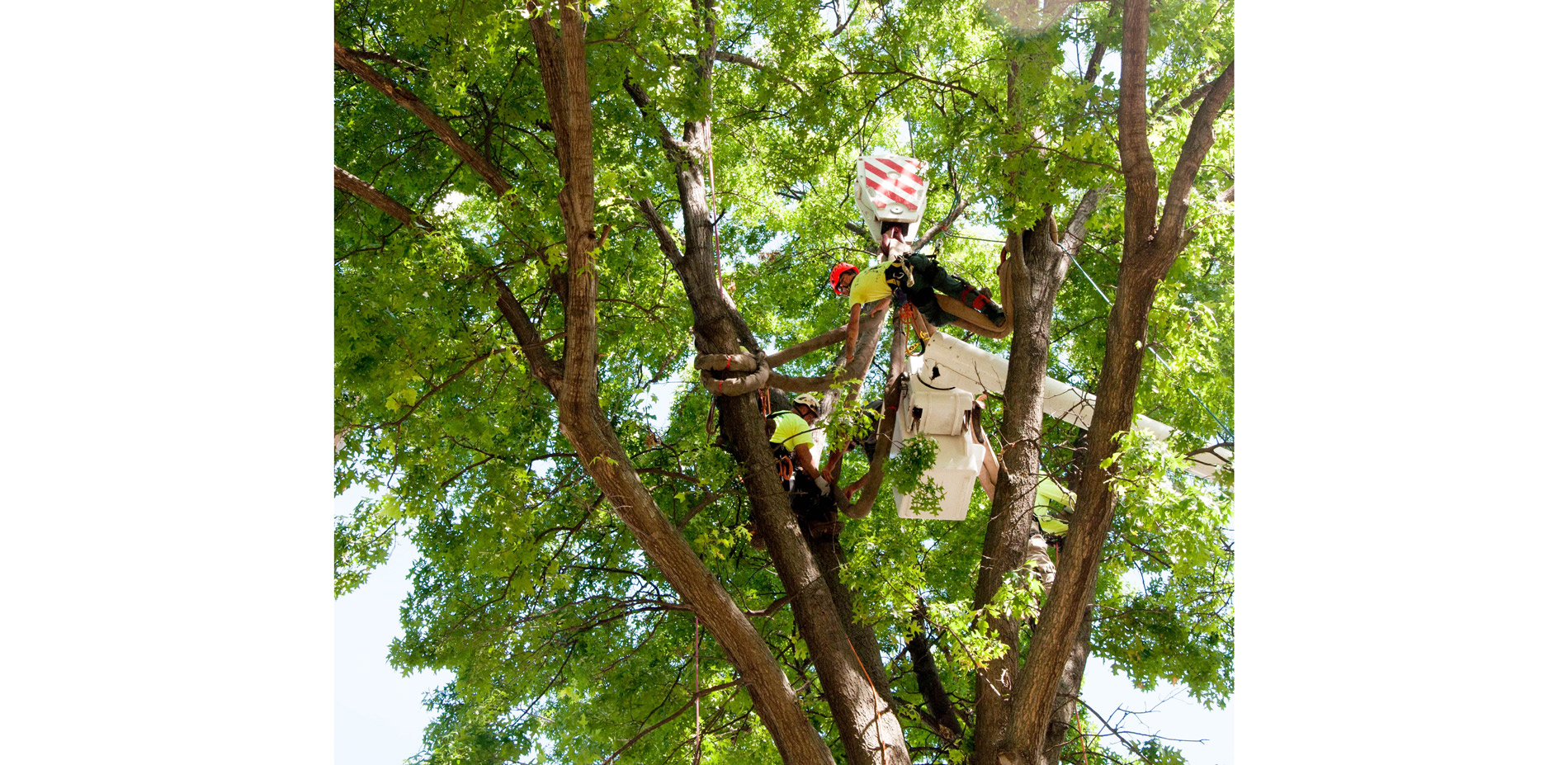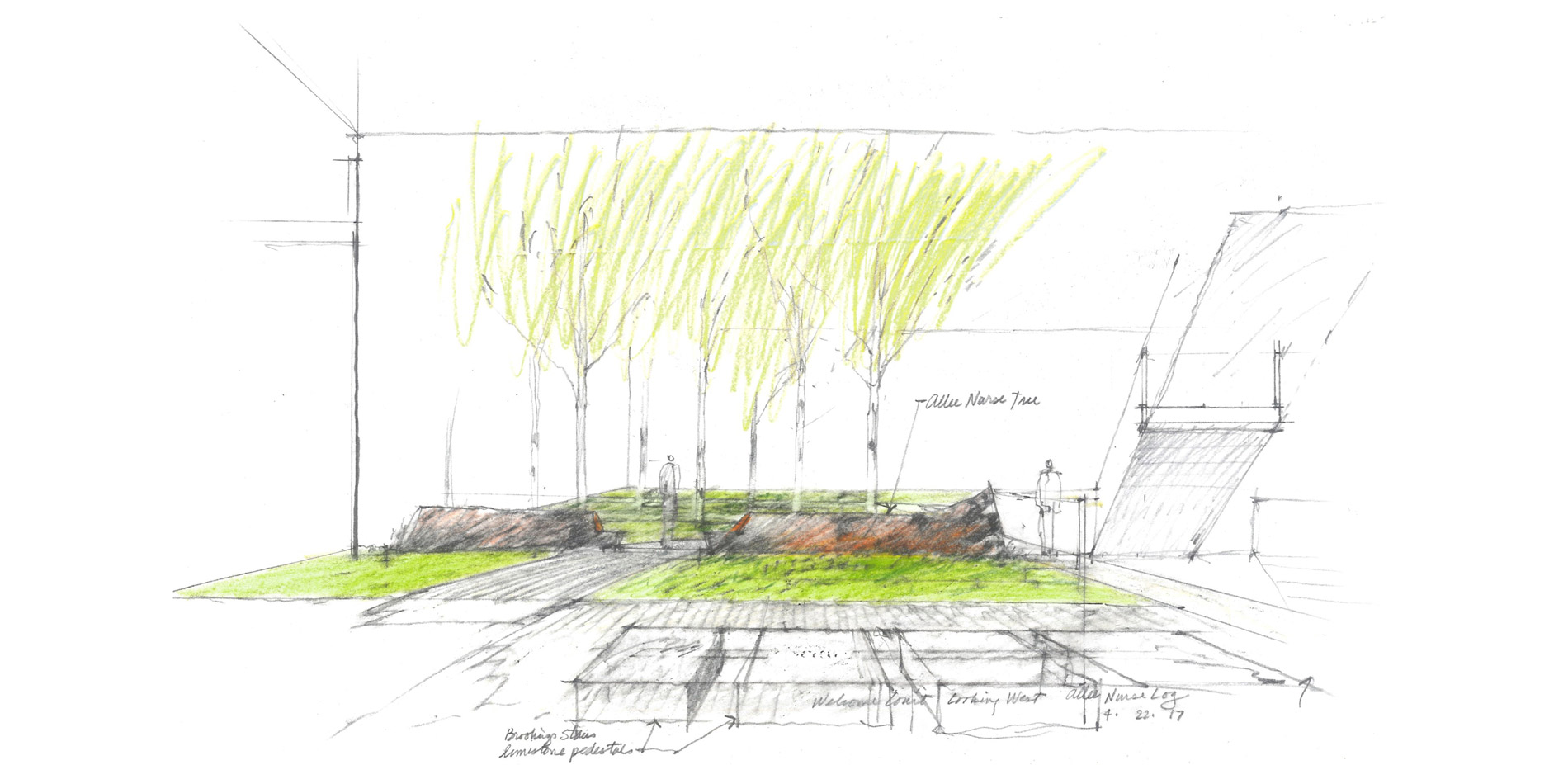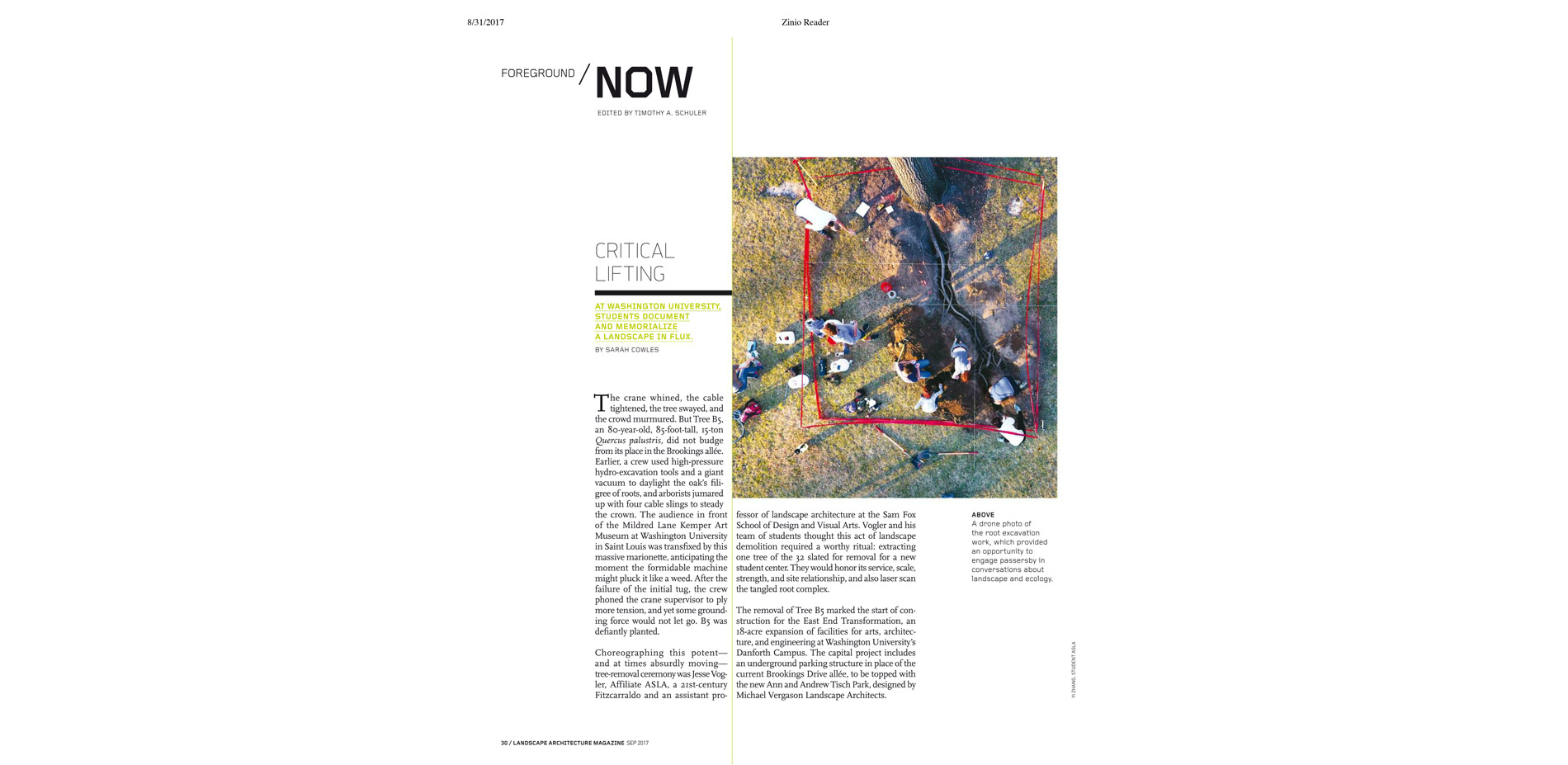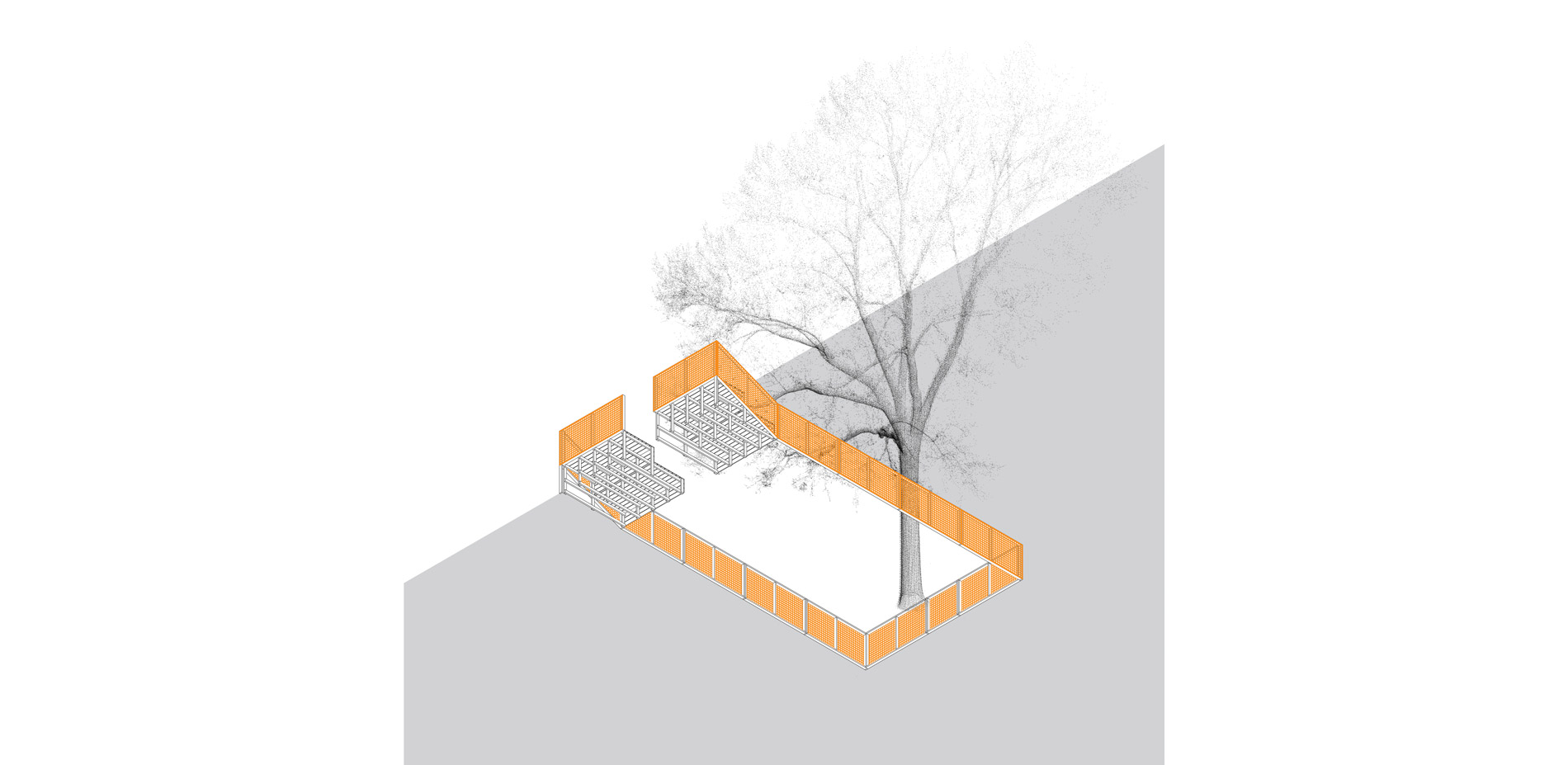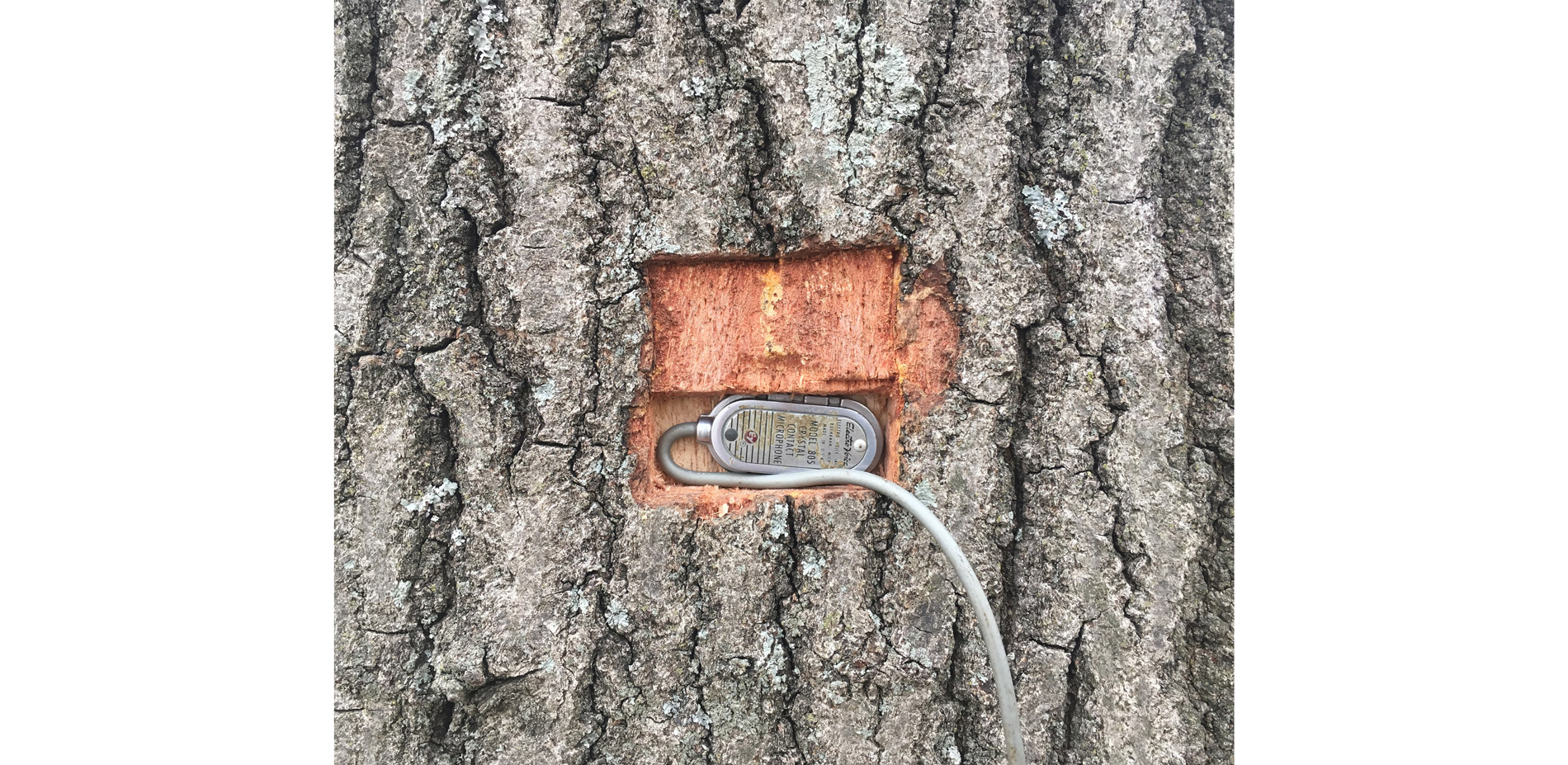The One Tree Project
AWARD OF EXCELLENCE
Student Collaboration
St. Louis, Missouri | Team: Margot Shafran, Student ASLA; Alisa Blatter, Associate, ASLA; Robert Birch; Shu Guo, Associate ASLA; Ophelia Yuting Ji; Scott Mitchell; Natalie Rainer; Allana Ross | Faculty Advisors: Jesse Vogler, Ken Botnick
Washington University in St. Louis
Just beautiful! One of the most impressive projects that involves students. This is the first time I’ve ever seen tree roots this way.
- 2018 Awards Jury
PROJECT CREDITS
- Ben Chu
- Bill Spradley
- Bruce Lindsey
- Charlie Vinz
- Chris Topp
- Dan Chitwood
- David Gunn
- Doug Ladd
- Frank Rinn
- Guy Mott
- Jennifer Colten
- Jenny Price
- Joshua Carron
- Kent Theiling
- Michael Stambaugh
- Richard Guyette
- Rod Barnett
- Scott Mangan
- Skip Kincaid
- Tomislav Zigo
PROJECT STATEMENT
With the imminent transformation of the East Campus at Washington University, this project-based investigation of is structured around an historical and ecological analysis of a pin-oak allée. This project examines our local landscape and resource legacy, offering insight into the greater meaning of trees in our urban ecosystem.
Beginning with one tree, this project bore an understanding of the community of trees, and an interrogation into ways that our landscape imaginaries can be tuned to embrace arboreal collectivity. The allée became a laboratory: asking questions of the trees, questions of their context, and questions of ourselves.
Working with arborists, ecologists, landscape architects, sculptors, dendrochronologists and artists, students interrogated the many meanings of one tree-from root to crown, from microbial sub-soil cultures to species habitats in its highest branches, from the monoculture of the 43 tree allée, to the diverse community beyond.
The project was capped by a ritual felling of a single tree in advance of the campus transformation, with this One Tree returning to the new landscape as a nurse log in 2019.
PROJECT NARRATIVE
The One Tree Project was structured around the imminent uprooting of a historic Pin-Oak Allée at Washington University in St. Louis. We began with the hypothesis that the profession of landscape architecture has much to learn from a focused, intensive study of a single tree. And as such, this was a collaborative, project-based studio steeped in multidisciplinary research—and as such does not begin with a known outcome, or an objective. Instead, it relies on the landscape being studied to provide a platform for exploration and offer a window into the greater meaning of trees in our urban ecosystem and cultures.
Working with arborists, ecologists, landscape architects, artists, dendrochronologists, and archivists, we worked to understand and bring forward the many meanings of one tree—from root to crown, from microbial sub-soil cultures to species habitats in its highest branches, from the monoculture of the 43 pin oak trees in the allée to the diverse ecological community beyond. The many ways of understanding one tree informed the ultimate direction of the studio resulting in various experimental platforms for exhibition that reframe this well-known cultural landscape and thank the trees for their 80 years of service as an iconic landmark to the campus. The One Tree project takes the territory of the tree as its classroom.
The Brookings Allée at Washington University in St. Louis has been the most consistent architectural element in the history of the university. The allée extends from Lindell Boulevard and connects the city to the base of a grand staircase that leads to the front doors of the university. From the picturesque landscape of the Olmsted Brothers plan to the 1899 Cope and Stewardson proposal for the allée we encounter today, the landscape of campus remains its defining condition. At the project's inception, the double allée was a made up of monoculture of pin oak—Quercus palustris—and provided the site, structure, and platform for our research.
Understood as a form of "slow research," we have integrated models of artistic and scientific methods to dive into the deep time of our context. As such, it is deeply based in investigation of the arboreal community of the campus at Washington University in St. Louis and beyond. To accomplish this, we studied a single tree from root to crown—its growth cycles, stresses, resilience, senescence, regeneration, and cultural significance. The One Tree Project and the historic Brookings Allée serves as a platform for interdisciplinary research and engagement.
Our team was large and varied. It began with a cores group of six students, some Master of Landscape students, the rest Master of Architecture students. These students were accompanied by a handful of Master of Fine Art students and two Professors. All working within the cloud of the One Tree Project, we each contributed by focusing our attention on individual lines of investigation relating to our own research, and sometimes in collaboration. For that reason, our work expands into the realms of research, art, communications and ultimately design.
The living and non-living matter of the tree is a rich area of investigation. Arborists and tree scientists shared their expertise to explore non-instrumental understandings of trees—an approach that positions the tree value in terms of ecologies rather than commodities. Using traditional techniques of tree coring, as well as emerging technologies of sonic tomography, we gained an understanding of the environmental stresses and historical episodes that inhere with the tree's structure. With this, we learned to see the tree as a living archive—a record of its own context.
Further, with an interest to understand its interactions with soil, the frequency of grafts, and its network of sub-soil fungal associations we carried out an analog excavation of a single root—from trunk flare to root tips. Using small shovels, brushes, and many people we determined its growth extended well past the commonly held drip-line assumptions; but more importantly that the grafting of roots from adjacent trees deeply complicated the singularity of our study.
The canopy of the tree is a manifestation of its growth and of its senescence. It is a record of available light over time and the proximity of other trees' branches. It is a map of tree branching intelligence, the logic embedded in its DNA. Students have programmed computer-generated L systems to frame questions about tree branching decision-making, formulated archaic ink recipes from oak twig galls to paint portraits of the trees themselves, and studied squirrel and tree biomes in intersection. The relationships between and among spatial environment, external stimuli, and behaviors are uniquely framed in this, as in every, arboreal community
Over the course of this semester, we worked to frame The One Tree Project as a performance—a production of arboreal publics—a constant exhibition that drew in an audience amongst individual streams of investigations. Throughout we stretched to broaden interest in the project and sought to welcome non-dendrophiles to participate in our explorations. We did this in part, but creating a blog – theonetreeproject.org, where each member of the team could share moments of their investigations and projects with a larger audience. Through the construction of a focused forum for researching the tree, we engaged in a public narrative of cultural and ecological transformation. Other efforts including, performances, lectures, happy hours, and signage all contributed to a project of communication and public engagement, by inviting more people from different communities into learning the story of these trees.
The week following commencement, it was intended for the One Tree to be lifted—roots and all—in a ritual marking of this moment of campus transformation. This intact tree, abstracted from its normal context, opens a singular experience of the tree as an entire organism. As a material artifact steeped in meaning and reference, this tree carries the incredible potential to enrich the narrative and ecological continuities across this moment of transition.
The One Tree, however would not uproot. Despite the genuine efforts of crane operators, architects, arborists, and students, including hydro root excavation, and intricate maneuvering of straps cradling branches of the tree in perfect balance by tree climbers, the tree did not budge. Instead, due to cost and time limitations, the tree was gently ushered down by the crane to expose the enormity of its root system. This day was shared with an audience who, like squatters, made camp within the allée to watch this dance.
But this will not be this tree's final performance. The possibility of a tree lifted from its ground, further facilitates the ideas for how this tree can go on providing research and narrative opportunities for the University. Working with Michael Vergason of MVLA, lead landscape architect on the east end transformation, our proposal is to return the tree trunk to the campus landscape after construction is finished in 2019 as a new type of living landscape lab. It will be replaced as a nurse log—a symbol of change but also of continuity with the past. The presence of this tree in the new landscape—decomposing while fostering new growth—will be the backbone of a knowledge infrastructure that allows us to narrate institutional and ecological change.
The active landscape systems of the new campus design have the potential to be augmented and enriched through the deep and slow landscape processes of decomposition and growth.
The project is humble; a once thriving community of trees no longer deemed integral to the future of a university were studied with curiosity and care. The projects that derived from this care were shared with a larger community and archived. The result was making public a process of quiet removal, which would have otherwise gone unnoticed.
